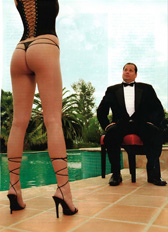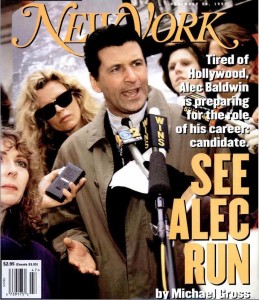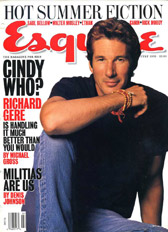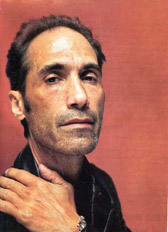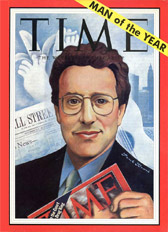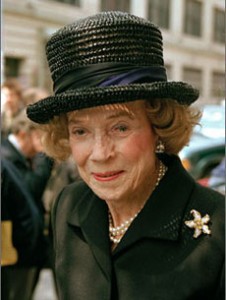
The Metropolitan Museum’s Costume Institute has a new-ish show, “American Woman,” exploring the modern woman through dress —a very original way to look at women, no? But that’s not what interests me most here. At the very end of the show, there’s a gallery where still images of 200 iconic American women are projected onto the wall as living symbols of female emancipation, and their physical and intellectual liberation. I just got a list of those women and some are very worthy, but it’s a missing name — the late Brooke Astor’s — that intrigues me most.
Admittedly, she was no feminist; she inherited her millions, but at least chose to do good with them, and do it herself, not through a male surrogate. Astor was not just well-dressed, and an icon of female fashion, albeit of the most buttoned-up and expensive sort, she was also a model philanthropist in an age that could use more, not fewer, examples of such to be thrown up on walls and celebrated. So how odd that at the Metropolitan Museum of Art, where she served tirelessly as a trustee and to which she gave countless millions of dollars, she would not be remembered and celebrated in just such a forum. Making this omission all the stranger, Mrs. William Astor aka Carolyne Schermerhorn Astor, or “the” Mrs. Astor of the famous 400 of the Gilded Age, is on the list. Rather than initiating a style revolution, as the museum press release puts it, she would more likely have been sent to the guillotine.
So I wondered, were any other members of the museum board on the list. Searching through the actresses (Gwynyth Paltrow), models (Christie Brinkley) and singers (Lady Gaga) thereon, I found Jacqueline Kennedy Onassis, who was not a trustee but at least was a museum supporter, cosmetics heiress Aerin Lauder, whose grandmother would have killed to be a trustee but was not allowed into that select club, three Vanderbilt women, but only the founder of their fortune, Commodore Cornelius Vanderbilt, ever made it into the board room, and finally, two actual trustees, Jayne Wrightsman and Annette de la Renta, both notably hard workers for the museum, and the first, at least, a figure of some cultural accomplishment. But hold their resumes up against Astor’s philanthropy and her indefatigable boosting of New York and you have to admit both look lightweight in comparison. Don’t you wonder how such choices get made —and who makes them?
Update: I got an email from the Met’s PR a day after this post went up, objecting to it. Brooke Astor is pictured, he told me in a subsequent phone call, though he admitted the photo was small so I might have missed it, and that originally she had not been on the list of 200 women that I checked, but that the list had since been revised and she had been included. He did not say when she was added, however, and I have since kicked myself for not asking. I did go up to the museum, however, and there Mrs. Astor was, pretty in pink on the gallery wall. But the image wasn’t small at all. It was, if anything, quite large in relation to most of the others. If I had anything to do with that, good. If she’s been there all along and was just left out of the press release I reported on (dated May 3, the day of the press preview and the Costume Institute Gala), that’s good too. This is a case where I’m glad if I was wrong. In the original post, I also thanked an intern who called the museum’s press office on my behalf since, I wrote, they won’t talk to me. The Met’s flack called that “patently untrue.” In truth, it was partly true. He does sometimes talk to me, though I would call it sparring. What matters is that he and his colleagues at the Met refused to talk to me when I was researching my book on the museum. I think that’s what’s called a distinction with a difference.
(Image swiped from nysocialdiary.com.)

